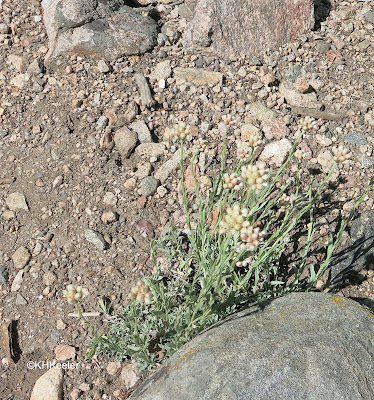Summer moves steadily up the mountains. As you rise up above the plains of Colorado into the Rocky Mountains, the plants that are done flowering at 5,000 feet elevation are in full bloom at 8,000 feet, but are still in bud at 11,000 feet. Of course not all the plants are able grow from 5000' to 11000' elevation, but many do.
These photos were taken in a ramble around Lily Lake, at 8,931' elevation.
 |
| Lily Lake, Rocky Mountain National Park, Colorado |



